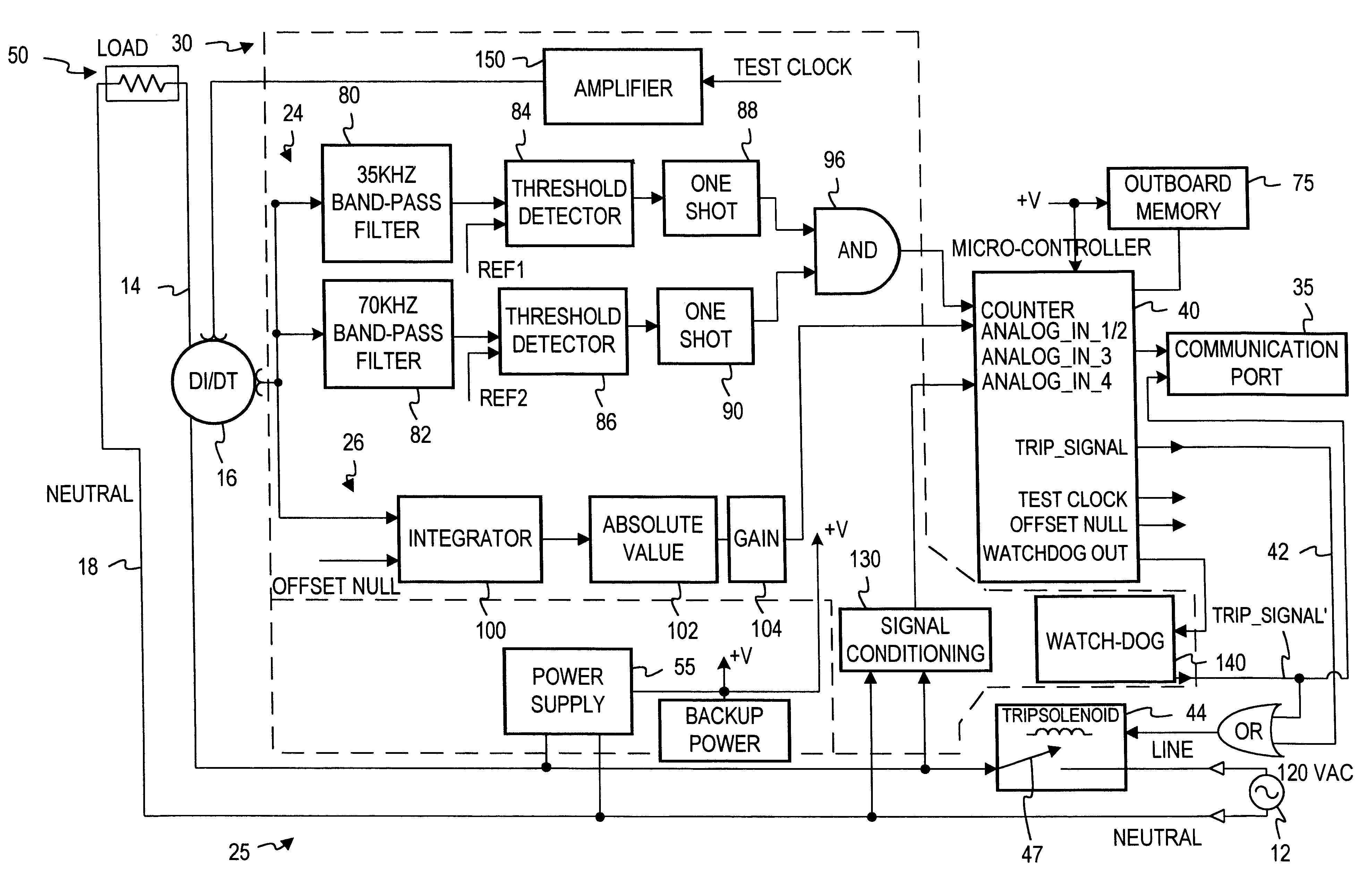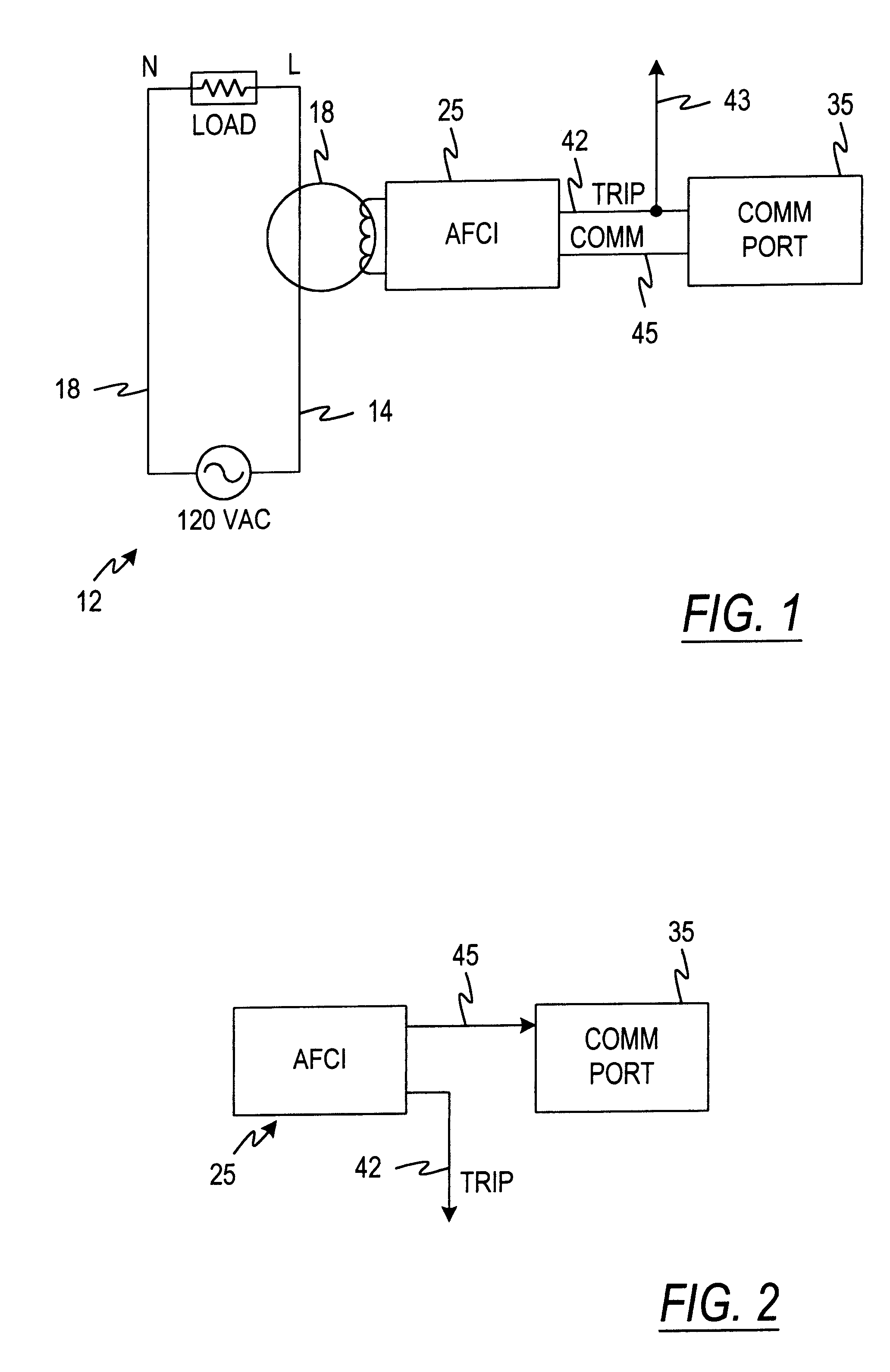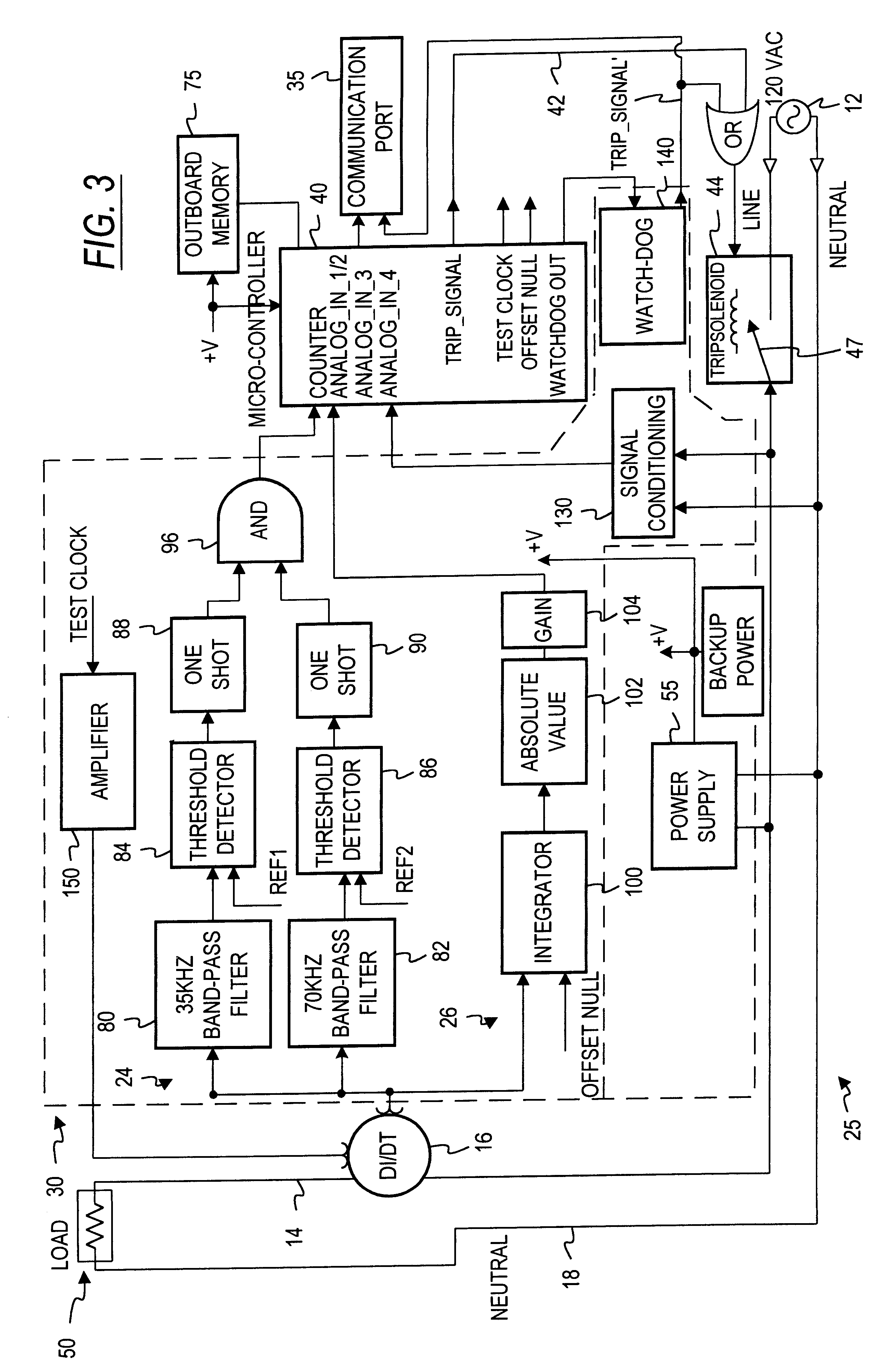Test, reset and communications operations in an ARC fault circuit interrupter with optional memory and/or backup power
a technology of arc fault circuit interrupter and optional memory, applied in the integration of power network operation system, emergency protective arrangement for limiting excess voltage/current, sustainable buildings, etc., can solve problems such as "ticking faults", circuit breakers interrupting electric circuits, and conventional circuit breakers tripping, etc., to achieve reliable detection of arc fault conditions
- Summary
- Abstract
- Description
- Claims
- Application Information
AI Technical Summary
Benefits of technology
Problems solved by technology
Method used
Image
Examples
Embodiment Construction
Referring now to the drawings and initially to FIG. 1, an arcing fault detection system in accordance with one embodiment of the invention is illustrated in functional block form. A 120 volt AC circuit 12 has a line conductor 14 and a neutral conductor 18. A sensor 16, which may be in the form of a di / dt coil is associated with the line conductor 14 and feeds an output signal to an arcing fault detection circuit or arc fault circuit interrupter (AFCI) 25. The AFCI circuit 25 has respective trip 42 and communications 45 outputs which are coupled with a communications port 35. The trip output 42 may also be coupled to directly or indirectly activate or trip a circuit interruption device for interrupting the current flow in the 120 VAC circuit 12 when an arcing fault is detected, as indicated by reference numeral 43.
The communication port 35, as shown in FIG. 2, may alternately receive only the communications signals from the AFCI 25 in which case the communications line 45, in additio...
PUM
 Login to View More
Login to View More Abstract
Description
Claims
Application Information
 Login to View More
Login to View More - R&D
- Intellectual Property
- Life Sciences
- Materials
- Tech Scout
- Unparalleled Data Quality
- Higher Quality Content
- 60% Fewer Hallucinations
Browse by: Latest US Patents, China's latest patents, Technical Efficacy Thesaurus, Application Domain, Technology Topic, Popular Technical Reports.
© 2025 PatSnap. All rights reserved.Legal|Privacy policy|Modern Slavery Act Transparency Statement|Sitemap|About US| Contact US: help@patsnap.com



